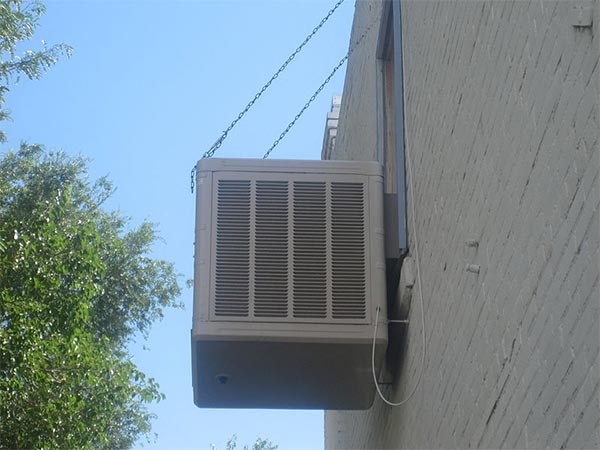Table of Contents
Evaporation and cooling
It surely is not so easy to link evaporation with cooling. Whenever we hear evaporation, we think of hot and sweaty days. The same image actually explains how evaporation can cause cooling. When the sweat evaporates, it takes a lot of heat from the body, and in a way it also cools is. The same property is used in evaporative cooling, but only on a larger scale. Everyone’s home and needs are different when it comes to heating and cooling and they needs professional heating and cooling service.
 Photo by Wikimedia Commons
Photo by Wikimedia Commons
Enthalpy of vaporization
Understanding this scientific term holds the key to properly understand the evaporative cooling. In layman terms, it is the amount of heat required to convert unit mass of liquid to vapor. So the amount of heat you need to give to liquid water to make it water vapor is it’s enthalpy of vaporization. It has a very high value for water, and that is why water is used as a coolant in almost all the air conditioners using this technique.
Cooling capacity
The cooling capacity of these air conditioners is varying, dependent on wet bulb depression. The temperature difference between the wet bulb and the dry bulb decides the cooling capacity of these air conditioners.
Comparison with other types of air conditioners
Other types of air conditioners use some form of refrigeration, whether it be vapor compression, absorption refrigeration etc. There is no refrigeration involved in this evaporative cooling process. This process takes the heat from the air and uses it for cooling. A better term to describe this would be phase changing air conditioners or cooling.
Advantages
There are many advantages of using this kind of cooling technique. It moderates the moisture content of the place, and so is very useful in dry places; as it can effectively increase the moisture content of the place because it works with water. There is also a substantial energy saving involved in this process. It is something that everyone should employ.
Areas of application
There are multiple places where this kind of a system can be used. Any dry area, like deserts or rocky places lacking vegetation is ideal for using evaporative cooling because it also has the capacity to increase the moisture content in the air. It can be fitted into single rooms, and also for whole buildings, and is equally effective in both areas. Also, depending on the cooling capacity of the variant you are using, the dimensions of the effective area of cooling can be calculated.
Types
There are many types of evaporative coolers based on designs:
- The first type is direct cooling. No change in the energy of the air takes place in this type. The heat in the air outside the room is used to cool the dry and warm air inside the room, and also to add some moisture to it.
- The second type is the indirect cooling. In this type, there is a change in the energy of the air. The cooled air and the unconditioned air from outside the room are never in direct contact, but some heat exchanging cycle makes the phase change possible.
- The third type is two stages cooling. This uses both direct cooling and indirect cooling. The order in which the two stages are used may vary, but the general principle of cooling remains the same.
Installations
Mentioned below are some of the installing procedures:
- Typical installation – This kind of installation is most commonly seen in offices or residential areas. There is an air dispensing unit inside the room and an external unit for the actual cooling.
- Cooling towers – Mostly seen in industrial areas. Involves a long cooling tower for more effective cooling.
- Misting – Used for instant cooling with temperature drop of 20oc in just a few seconds.
To know some more information about evaporative cooling then click here and you will get all about evaporative cooling advantages, types and installation related useful details.











Leave a Reply